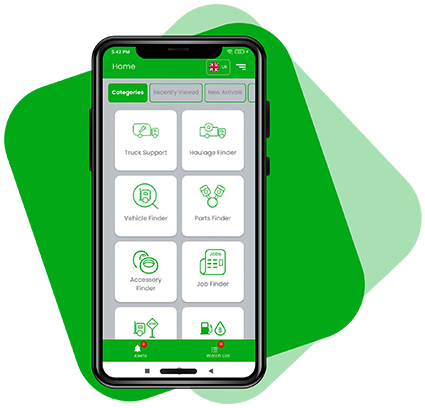Working Patterns and Shift Schedules for HGV Class 1 Drivers
HGV Class 1 drivers experience a diverse range of working patterns. Typically, the shifts are scheduled from Monday to Friday, with drivers sometimes being required to stay overnight away from home, depending on the route and delivery demands.
Flexibility and Overtime
- Nights
Out: It's common for drivers to spend nights
away from home, especially on longer routes that stretch across regions.
- Weekend
Work: While the core schedule revolves around
weekdays, there is an occasional need to work weekends. This mainly
depends on specific delivery schedules or increased demand.
- Overtime
Opportunities: There are generally opportunities for
overtime, which can occur on weekends or be needed when there are
unexpected logistical changes.
This structure ensures that drivers are
adaptable and ready to meet the demands of a dynamic logistics environment.
In the UK, HGV Class 1 drivers typically
operate under structured shift schedules designed to balance productivity with
legal requirements and driver well-being. Here’s an overview of the most common
working patterns and shift schedules seen in this field:
1. Standard
Shift Types for HGV Drivers
- Day
Shifts: Usually start early in the morning (4-6
a.m.) and run until late afternoon or early evening, aligning with
warehouse hours or retail delivery windows. These shifts suit shorter,
regional deliveries.
- Night
Shifts: Often start in the evening (6-8 p.m.)
and run through the night, suited for long-haul and distribution center
routes where goods are required early the next day.
- Rotating
Shifts: Many drivers alternate between day and
night shifts, often on a weekly basis, allowing for 24/7 coverage.
Rotation schedules can vary from one week on nights, then days, to
alternating days within a week.
- Split
or “Double” Shifts: Some companies may break shifts into
two parts, allowing drivers to complete multiple runs within a day with a
substantial break between them.
- Four-On/Four-Off:
Drivers work four days in a row, followed by four consecutive days off,
providing balanced rest periods and meeting operational demand.
2. Hours
and Legal Driving Limits
- Daily
Driving Limits: Under UK law, HGV drivers are limited
to 9 hours of driving per day, extendable to 10 hours twice a week.
- Weekly
Driving Limits: Drivers may not exceed 56 driving hours
in one week or 90 hours over any two consecutive weeks.
- Mandatory
Breaks: Drivers are required to take a minimum
of 45 minutes of rest after every 4.5 hours of driving. This helps reduce
fatigue and ensures safety on the road.
- Daily
and Weekly Rest Requirements: HGV drivers must take at least 11
consecutive hours of rest each day, which can be reduced under certain
conditions. Weekly rest periods of at least 45 hours are required, though
this can be reduced to 24 hours if compensated later.
3. Industry-Specific
Scheduling
- Retail
and Supermarkets: Delivery schedules are structured to
ensure shelves are stocked consistently, often requiring rotating shifts,
four-on/four-off patterns, or even split shifts to maintain supply.
- Long-Haul/International
Freight: These drivers may be scheduled for
longer shifts with considerable overnight driving, and they often work
irregular hours based on the destination and delivery requirements.
- Courier
and Parcel Services: Short-haul drivers in courier roles
often work early shifts and finish by evening, allowing for timely
next-day deliveries.
- Construction
and Seasonal Industries: Drivers may work variable hours
depending on the project or season, with greater flexibility to meet
shifting demand.
4. Health
and Well-being Considerations
- Sleep
and Fatigue Management: Night and rotating shifts require
careful management of sleep to ensure drivers remain alert. Companies may
also implement fatigue monitoring systems and provide training on rest
optimization.
- Work-Life
Balance: Shift types like four-on/four-off can
offer better work-life balance, though some drivers prefer consistent days
or nights to build a routine.
- Technology
and Route Optimization: Companies often use logistics software
to improve route efficiency and balance driver shifts, minimizing
unnecessary driving hours and helping meet regulatory requirements.
5. Technological
and Legal Adaptations
- Digital
Tachographs: Digital recording systems track driving
hours, ensuring compliance with legal limits, while route optimization
technology helps companies plan shifts within legal limits and avoid
excessive hours.
- Driver
Assistance Apps: GPS-based and scheduling apps help
drivers track break times, parking, fuel stops, and potential delays,
making route and rest management easier.
Understanding and balancing these work
patterns and schedules can help HGV drivers maintain safety, job satisfaction,
and regulatory compliance in a demanding role.


 Download our New App
Download our New App

